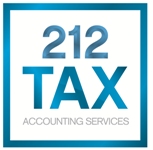The Roth IRA is one of the best tools to make sure you’re prepared for retirement. While it shares a benefit common to all IRAs, letting you enjoy tax deferred growth on the savings in your account until retirement, it also allows for untaxed distributions once you’ve retired.
While the Roth IRA is a great option, there are two restrictions you should be aware of before you sign up, known as the five year rules – one for new Roth accounts and the other for IRA to Roth IRA conversions. These tax based disincentives prevent Roth IRA accounts from being taken advantage of, but also discourage you from accessing your funds early.
1. The Contribution Rule
The contribution five year rule prevents you from withdrawing earnings for the first five years on your Roth IRA account before you reach age 59 1/2. This is for those who open a Roth and make periodic contributions. You can withdraw the contributions you make at anytime, without any tax or penalty on the principal portion of the account. Earnings on those contributions are treated differently. Access to any earnings is restricted for five years from the 1 January of the year during which your first contribution was made. Essentially, you have to have held a Roth Account for five years to withdraw any earnings tax free as long as you are 59 ½ years old. Withdrawing those earnings before the five year period means they will be subject to tax and 10% early withdrawal penalties. Opening additional Roths or making more contributions doesn’t restart the clock – it’s just a one time standard.
2. The Conversion Rule
As for the Roth converters, your converted assets have to be held in the Roth account for five years or until you turn 59.5 years old. Once you’ve reached either of the points, you can make penalty free withdrawals on your converted funds. Each conversion has its own five year clock, unlike the contribution delay. If you’re already 59.5 years old when you convert to a Roth IRA, then there’s no five year restriction.
The contribution rule applies equally to Roth converters though. This means you have to have held the converted account for five years before you can withdraw any earnings tax free. Keep in mind that the early distribution penalty will apply even though the distribution isn’t taxable.
Each of the five year rules are measured from the beginning of the corresponding tax year, meaning the year you first contribute or convert to a Roth IRA. Consult your tax advisor at 212 Tax about your retirement planning.
Request a Consultation
We are able to work with your unique schedule including after-hour appointments, most weeknights, and weekends.
Call to action
Build Growth Opportunities with Extensive Business Financial Services
We serve clients in a range of industries, including hospitality, nightlife, real estate, legal, and medical.


